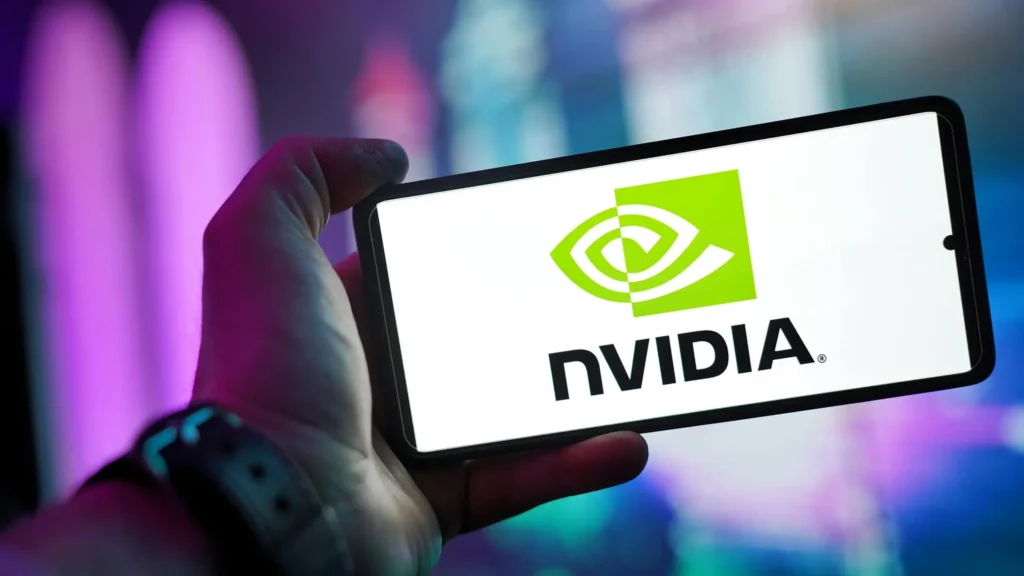Automating Operations & Logistics
3. Automating Operations & Logistics

Automating operations and logistics involves leveraging cutting-edge technologies like artificial intelligence, robotics, IoT, and advanced data analytics to streamline workflows, optimize resource allocation, and enhance decision-making. From warehouse automation and predictive maintenance to real-time tracking and autonomous transportation, automation is reshaping the entire logistics landscape.
This section explores how automation is revolutionizing operational efficiency, reducing human error, lowering costs, and driving scalability across industries. Whether you’re in manufacturing, retail, healthcare, or logistics services, understanding and implementing automation strategies can be the key to staying competitive and future-ready.
As sales and marketing go agent-first, so too must the backbone of the business: operations and logistics. In a world driven by speed, precision, and resilience, the operational edge no longer comes from simply being efficient—but from being intelligently automated. AI agents are increasingly stepping into the roles of planners, coordinators, analysts, and even predictive decision-makers, reshaping everything from internal workflows to global supply chains.
Table of Contents
3.1 Virtual Ops Management: Agents That Keep the Engine Running
Running a modern organization involves managing dozens, if not hundreds of concurrent internal workflows, status updates, project timelines, and decisions. Virtual operations agents are becoming indispensable as internal copilots, streamlining coordination and turning messy systems into structured, real-time dashboards.
What They Do:
- Track deadlines, tasks, and cross-functional dependencies
- Auto-generate status reports and meeting agendas
- Monitor project health and suggest next steps
- Nudge teams based on activity patterns and bottlenecks

Tool in Action: Coda AI
Coda, founded by former YouTube executive Shishir Mehrotra, has grown into a powerful platform for operational excellence. Its AI now functions as an embedded operator—automating workflows, identifying bottlenecks, and nudging teams toward the next best action.
Coda AI doesn’t just summarize meetings or draft updates—it monitors project momentum across docs, flags stalled initiatives, suggests owners for unassigned tasks, and even predicts delivery risk based on team activity patterns. For example, if a launch doc hasn’t been updated in a week, Coda might alert the project lead and recommend a sync. It can proactively generate team briefs before a meeting, pull in relevant data from other systems (like Salesforce or Jira), and propose decisions based on historical context.
These AI-driven agents behave like real-time COOs—quietly orchestrating status updates, reducing coordination tax, and letting teams stay focused on high-leverage work.
The real power isn’t in just logging tasks—it’s in guiding teams through ambiguity with AI-generated structure, forecasts, and nudges.
3.2 Agentifying Logistics & Fulfillment: From Reactive to Predictive

The logistics and fulfillment space has always been about precision—but now, AI is helping move the industry from reactive problem-solving to proactive orchestration. Whether it’s planning routes, forecasting inventory needs, or managing warehouse flow, intelligent agents are redefining what’s possible.
Strategic Applications:
Function | How AI Helps |
Real-Time Tracking | Agents provide visibility across global shipments, with live ETA adjustments |
Predictive Ordering | AI forecasts demand spikes and automates inventory restocking |
Fleet Optimization | Routing engines adapt in real time to traffic, weather, and fuel costs |
Warehouse Coordination | Robotics + AI agents assign, sort, and optimize picking and packing workflows |
Company Spotlights:
Flexport — Reinventing Global Shipping with AI
Founder: Ryan Petersen
Industry: Global Logistics & Freight Forwarding
Founded: 2013
Headquarters: San Francisco, CA
Overview
Flexport is a technology-driven freight forwarding and logistics company that combines software, data, and supply chain expertise to manage the movement of goods around the world. It positions itself as a “command center” for global shipping by offering full-stack services that include freight forwarding, customs brokerage, inventory management, and more—all wrapped in a digital platform.
How AI Is Embedded in Their Approach
Flexport uses artificial intelligence to address the complexity and unpredictability of global trade. Key AI-powered capabilities include:
Real-time shipment tracking: Their system integrates live data from various sources—such as ports, carriers, and GPS—to provide a unified, real-time view of every shipment’s status.
Automated exception handling: When issues like customs delays or weather disruptions occur, AI algorithms assess the problem and suggest or even initiate responses to minimize impact.
Demand forecasting and logistics planning: Predictive models help businesses anticipate lead times, optimize routes, and adjust inventory levels more accurately.
Intelligent customs compliance: Machine learning assists in categorizing goods and ensuring documentation is correct, reducing delays and human error.
Impact
By digitizing the global shipping process, Flexport improves operational efficiency, enhances visibility, and reduces risk for businesses of all sizes. It also contributes to sustainability efforts by promoting smarter, more efficient shipping decisions that minimize waste and emissions.
Flock Freight — Optimizing Truckloads Through AI
Industry: Freight Technology / Domestic Logistics
Founded: 2015
Headquarters: Solana Beach, CA
Overview
Flock Freight specializes in transforming how freight moves across the country by enabling shared truckload (STL) shipping. Instead of sending partially filled trucks on individual routes, Flock Freight intelligently groups shipments from multiple customers into a single, optimized truckload. This model not only saves money but also reduces environmental impact.
AI at the Core of Their Model
Artificial intelligence is essential to how Flock Freight operates. The platform uses advanced algorithms to:
Bundle shipments effectively: AI clusters freight with similar routes and delivery timeframes to create efficient, shared loads.
Continuously adapt routes: Routing decisions are dynamically updated in real time as new shipments are booked or road conditions change.
Track environmental performance: The platform calculates carbon savings for every shared shipment, giving customers actionable sustainability insights.
Impact
Flock Freight’s shared truckload model delivers clear economic and environmental benefits. By filling trucks more efficiently, the company helps reduce shipping costs and cuts down on unnecessary fuel usage. This approach addresses long-standing inefficiencies in the trucking industry while aligning with growing demand for sustainable supply chain practices.
Side-by-Side Comparison
Aspect | Flexport | Flock Freight |
Core Focus | International freight and logistics | Domestic trucking and shared truckloads |
AI Use Cases | Shipment tracking, planning, compliance | Load bundling, route optimization |
Sustainability Approach | Better routing and inventory control | Reduced carbon footprint through sharing |
Ideal Customers | Import/export businesses, global brands | National shippers, mid-sized companies |
Key Value Proposition | Global visibility and automation | Cost savings and greener transportation |
Case Study: Flock Freight – Unlocking Efficiency and Sustainability with AI Agents
In a logistics landscape burdened by inefficiencies and rising environmental concerns, Flock Freight emerged as a game-changer by integrating AI-powered decision-making into freight management. Their innovative approach centered around pooling partial truckloads, optimizing routes in real time, and maximizing vehicle utilization.
The Challenge: Inefficient Load Management
Traditionally, medium-sized suppliers faced a dilemma—either overpay for underutilized freight space or delay shipments while waiting to fill a full truckload. This outdated model led to:
Increased shipping costs per unit
Higher carbon emissions due to half-empty trucks on the road
Inflexible logistics that struggled to adapt to supply chain shocks
Managing freight was like navigating a road trip by only looking in the rearview mirror—reactive, inefficient, and blind to the road ahead.
The Solution: AI Agents for Predictive and Adaptive Logistics
Flock Freight introduced AI agents that analyzed real-time data across suppliers, shipment volumes, vehicle availability, and traffic conditions. These agents dynamically pooled partial loads from different businesses headed in the same direction—creating shared truckloads that made economic and environmental sense.
Key innovations included:
Intelligent Routing Algorithms: AI calculated the most efficient multi-stop routes based on predictive data, rather than relying on static logistics planning.
Live Freight Pooling: Partial loads from nearby shippers were bundled into a single optimized delivery path.
Environmental Intelligence: Emissions data was factored into routing decisions, aligning with corporate sustainability goals.
The Results: Tangible Impact on Costs and Carbon
By deploying AI agents across its logistics network, Flock Freight delivered transformative results:
Shipping costs dropped by up to 20% for medium-sized suppliers
Greenhouse gas emissions reduced by up to 40%, thanks to fewer trucks making better use of capacity
Increased agility, allowing businesses to respond faster to disruptions in supply and demand
The Bigger Picture: AI as a Strategic Compass
This shift in logistics management mirrors a broader transformation: AI isn’t just an efficiency tool—it’s a strategic compass. Instead of navigating blindly, companies now benefit from predictive insights that help them chart smarter, faster, and greener routes through supply chain uncertainty.
As global markets face increasing volatility—from climate events to geopolitical disruptions—businesses that leverage AI for proactive logistics are building not just resilient operations, but sustainable competitive advantages.
3.3 Digital Twins + AI Agents: The Future of Operational Foresight

Digital twins, virtual replicas of physical systems, have been around for years. But now, when paired with AI agents, they are becoming powerful simulation tools that allow businesses to test decisions before making them. From factories to airports, companies are training agents in digital environments to model real-world outcomes without real-world risks.
How It Works:
Digital Twin = Virtual representation of a real system (e.g., factory floor)
AI Agent = Learns from real-time and historical data inside the twin
Outcome = Simulates, predicts, and optimizes processes like layout, throughput, and downtime
Platform to Watch: NVIDIA Omniverse

NVIDIA’s Omniverse platform enables companies to create real-time, photo-realistic digital twins of entire operations. Paired with AI agents trained on real-world data, these twins help simulate supply chain disruptions, equipment failures, and layout reconfigurations before they happen in the real world.
Use Cases:
BMW – Streamlining Factory Design and Human-Robot Collaboration with Digital Twins
Industry: Automotive Manufacturing
Technology Used: NVIDIA Omniverse, Digital Twin Simulation, AI
Objective: Optimize factory operations and improve collaboration between humans and robots.
Overview
BMW has developed highly detailed digital twins of its automotive factories to simulate everything from assembly line workflows to human-robot interactions. These virtual replicas mirror real-world conditions and layouts with remarkable precision, allowing engineers and planners to test scenarios long before implementing them on the factory floor.
Key Use Cases
Simulating Robotic Movement: BMW uses simulation to analyze how robots move, hand off parts, and interact with machinery. This helps identify inefficiencies and prevent costly collisions or downtime.
Optimizing Assembly Lines: Before physically building or reconfiguring an assembly line, BMW can test configurations digitally, ensuring the most efficient design for both machines and workers.
Worker Collaboration: Human avatars are integrated into the digital environment to evaluate ergonomics and safety, enabling BMW to design workstations that reduce physical strain and improve productivity.
Impact
By using digital twins, BMW can significantly shorten planning cycles, reduce costs associated with physical prototypes, and accelerate the rollout of new production lines. This approach enhances flexibility and supports BMW’s goal of building smarter, more adaptive factories.
Siemens – Testing Industrial Automation in the Virtual World
Industry: Industrial Automation & Engineering
Technology Used: NVIDIA Omniverse, AI-Driven Simulation, Edge Computing
Objective: Validate complex automation systems before deployment.
Overview
Siemens integrates digital twin technology into its industrial automation systems to test, iterate, and deploy solutions with reduced risk and higher confidence. Using platforms like Omniverse, Siemens creates real-time, photorealistic simulations of industrial processes and environments.
Key Use Cases
Pre-Deployment Testing: Siemens can simulate entire automation workflows—such as conveyor systems, robotic arms, and control logic—without touching physical hardware.
Sensor and PLC Validation: Engineers validate how programmable logic controllers (PLCs) and industrial sensors behave under different conditions, using the twin as a test bench.
Scenario Analysis: From production surges to system faults, Siemens tests how systems respond to a range of what-if scenarios, ensuring robustness and uptime.
Impact
With digital twins, Siemens can reduce time-to-market, prevent failures in live environments, and deliver automation solutions that are both resilient and tailored to client needs. It’s a critical step toward achieving predictive maintenance and autonomous operations in manufacturing.
PepsiCo – Optimizing Warehouse Logistics with Digital Twins
Industry: Food & Beverage / Supply Chain
Technology Used: AI, Digital Twins, Simulation Platforms
Objective: Improve warehouse flow and reduce material handling time.
Overview
PepsiCo employs digital twin technology to model and optimize warehouse operations across its global supply chain. The goal is to increase efficiency, reduce bottlenecks, and improve throughput without major capital investments.
Key Use Cases
Warehouse Layout Simulation: PepsiCo builds virtual models of warehouse spaces to test the placement of pallets, conveyors, and storage zones before making physical changes.
Forklift and Material Handling Optimization: The company simulates the flow of goods and movement of forklifts to reduce idle time, overlaps, and unnecessary travel distances.
Real-Time Decision Support: By connecting real-world IoT data to the digital twin, PepsiCo can simulate how small changes, like adjusting shift schedules or modifying routes—impact overall efficiency.
Impact
PepsiCo has seen measurable gains in warehouse productivity and reductions in handling time through digital twin-driven insights. This technology enables more agile logistics planning and supports continuous improvement across its distribution network.
AI agents operating inside digital twins aren’t just reacting, they’re experimenting. They allow leaders to test bold ideas without the usual risk, making innovation faster, safer, and more data-informed.
Contributor:

Nishkam Batta
Editor-in-Chief – HonestAI Magazine
AI consultant – GrayCyan AI Solutions
Nish specializes in helping mid-size American and Canadian companies assess AI gaps and build AI strategies to help accelerate AI adoption. He also helps developing custom AI solutions and models at GrayCyan. Nish runs a program for founders to validate their App ideas and go from concept to buzz-worthy launches with traction, reach, and ROI.
Contributor:

Nishkam Batta
Editor-in-Chief - HonestAI Magazine
AI consultant - GrayCyan AI Solutions
Nish specializes in helping mid-size American and Canadian companies assess AI gaps and build AI strategies to help accelerate AI adoption. He also helps developing custom AI solutions and models at GrayCyan. Nish runs a program for founders to validate their App ideas and go from concept to buzz-worthy launches with traction, reach, and ROI.
Unlock the Future of AI -
Free Download Inside.
Get instant access to HonestAI Magazine, packed with real-world insights, expert breakdowns, and actionable strategies to help you stay ahead in the AI revolution.

